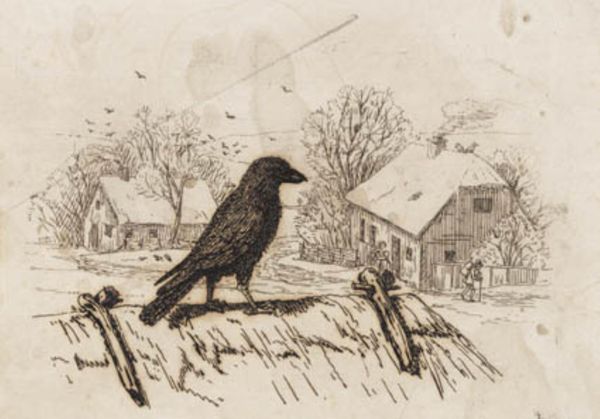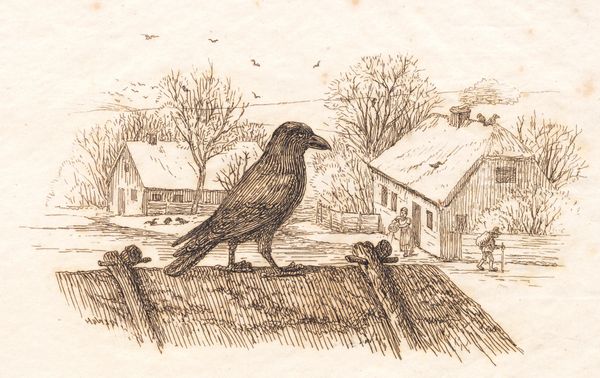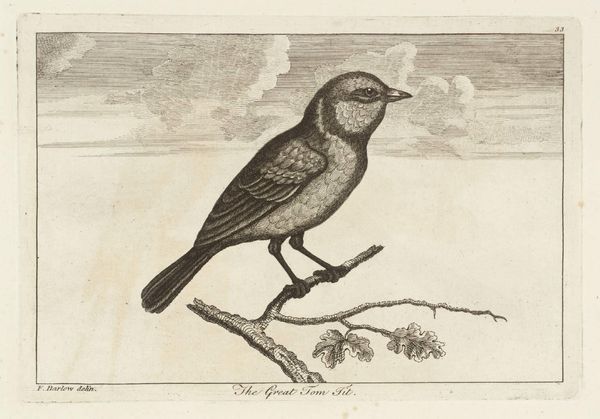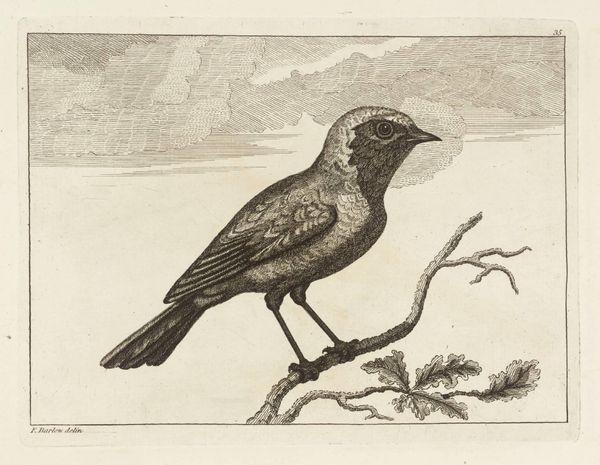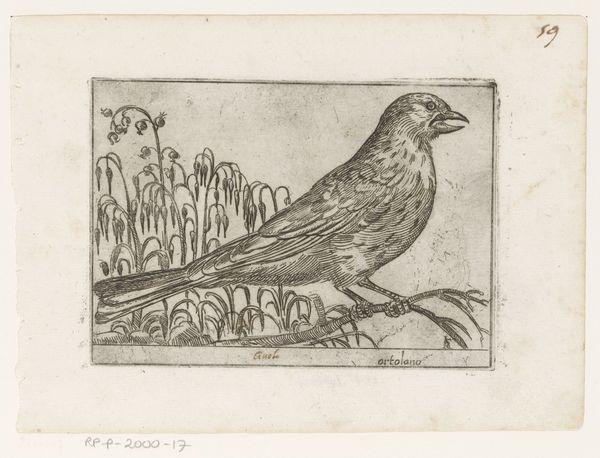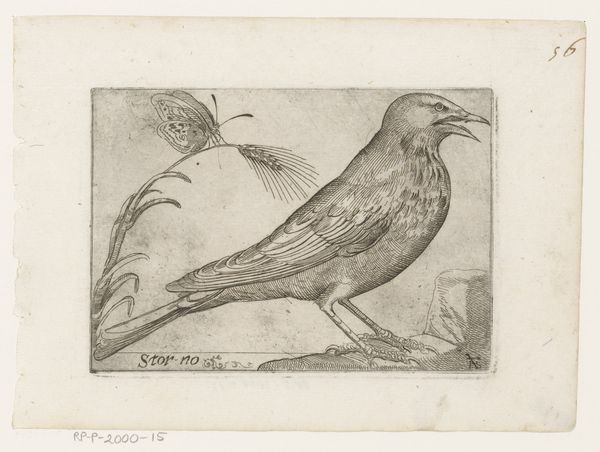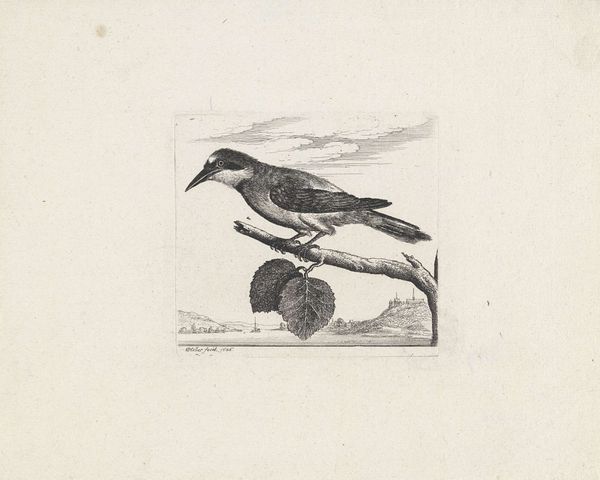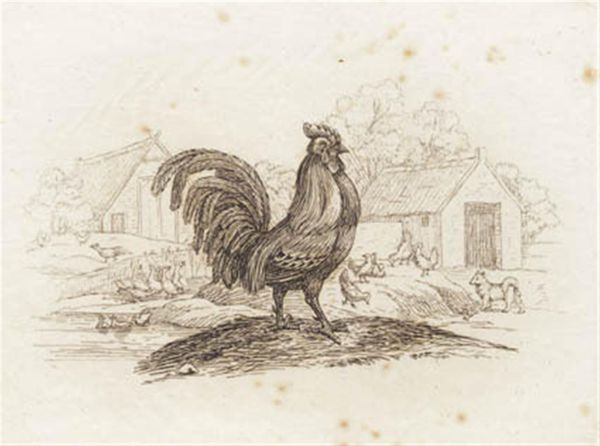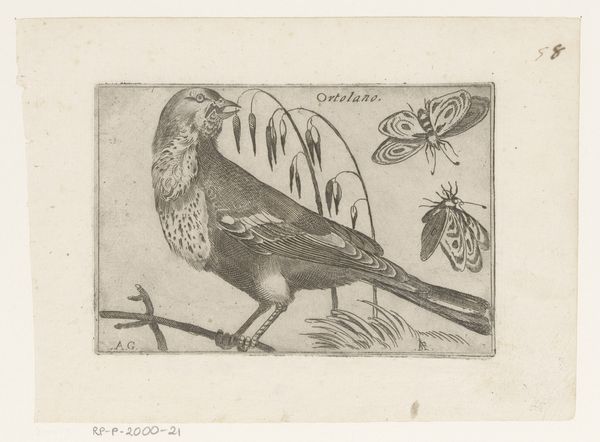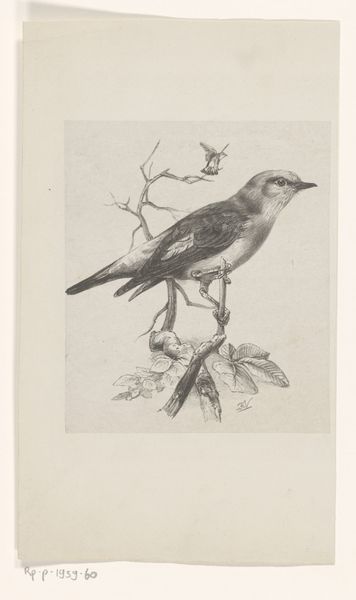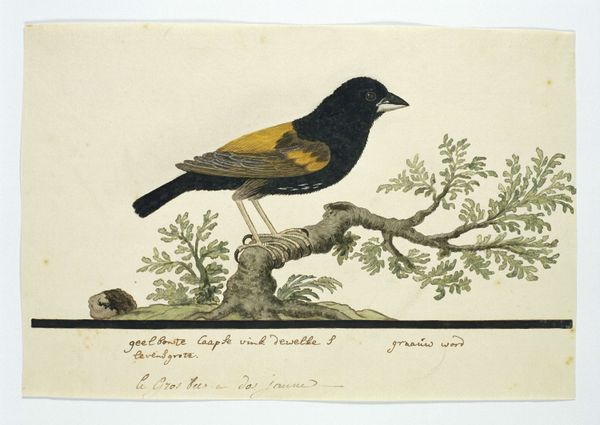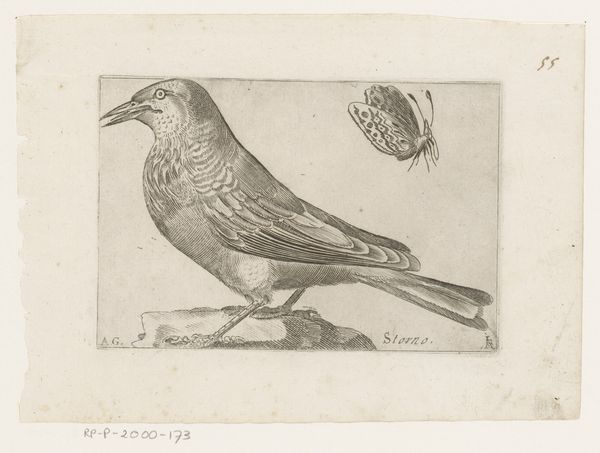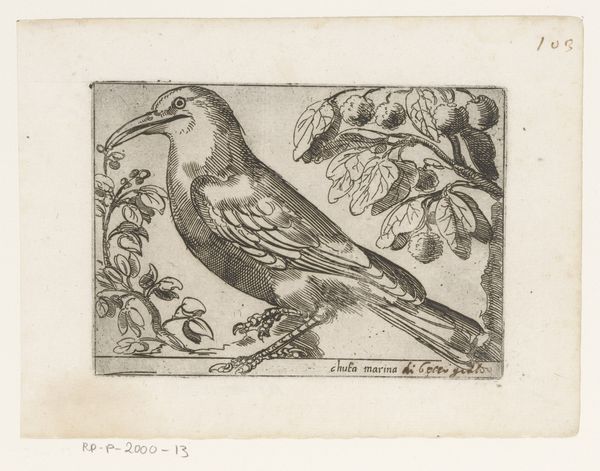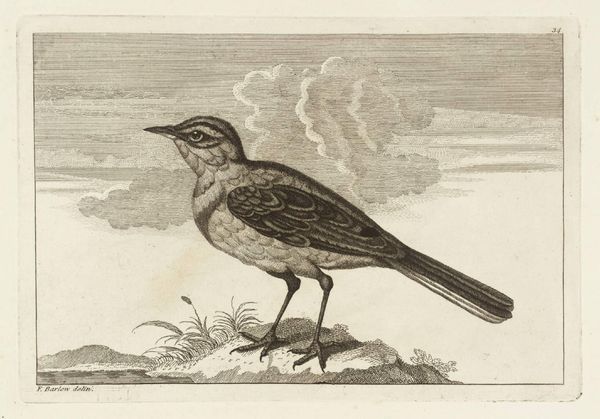
Illustration til "Halvhundrede Fabler for Børn" af Hey 1834
0:00
0:00
drawing, print, paper, ink, engraving
#
drawing
# print
#
landscape
#
paper
#
ink
#
romanticism
#
genre-painting
#
engraving
Dimensions: 143 mm (height) x 260 mm (width) (bladmaal)
Curator: Right, let’s dive into this piece. We're looking at an illustration by Martinus Rørbye from 1834, titled "Illustration til 'Halvhundrede Fabler for Børn' af Hey." It's an engraving on paper, rendered in ink. Editor: Immediately, I’m struck by the starkness. That dominant crow, perched right in the foreground. It feels a bit like winter's grip. Somber, yet oddly charming in its simplicity. Curator: Precisely. Rørbye's skillful use of engraving allows for incredible detail. Consider how the ink renders not just form, but also texture. The thatched roof the crow stands on, the snow-laden houses in the background – it’s all incredibly tactile. We also need to think about the social implications: this image comes from a collection of fables "for children." Editor: Absolutely. The fable connection throws another light on it. Is the crow a messenger, an omen? There's a storytelling quality built right into the scene, a suggestion of narrative lurking just beyond what we see. The figures in the background almost feel like they're enacting some miniature drama, witnessed only by us, and the bird. I get a folk tale vibe... Curator: Which speaks directly to Romanticism and the themes valued in such works. Romanticism often leaned into representations of everyday people to communicate folk knowledge and the value of hard work. The materiality supports this too, because print illustrations allowed for wider circulation, democratization of knowledge, and promoted education across social lines. It's quite efficient for distribution. Editor: Very efficient! It’s fascinating to see how Rørbye combines this larger-than-life bird, with the very delicate linework and the mundane setting, that interplay is wonderful. It kind of suggests grand tales, even from ordinary existence, or warnings in small places. A lot for a kid's book, right? Curator: And again the ink, paper and printing techniques helped support a mass distributed visual aid. Editor: True, and that really ties back to the production and reception. It is all carefully integrated for broader circulation, a moral tale at every house! Curator: A useful way to understand children’s books, especially during that period. Well, this look at Rørbye and the fables has me considering more broadly the role of accessible artwork. Editor: Agreed! What a nice reminder that even the simplest image can speak volumes about craft, society, and even…the poetry of crows.
Comments
No comments
Be the first to comment and join the conversation on the ultimate creative platform.
